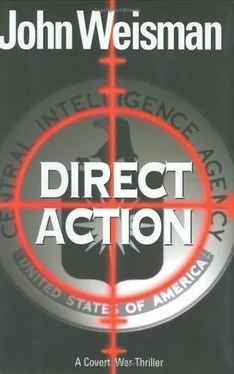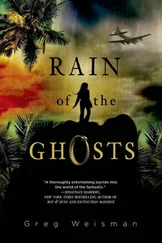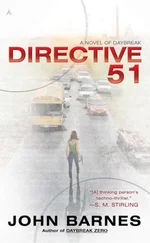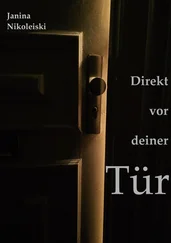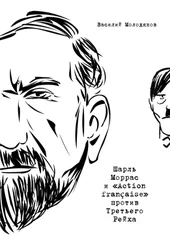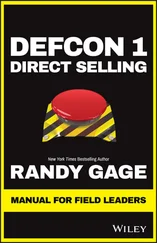Tom’s face lit up. He waved off the Corsican security guard and jogged to the door. “Ahlan,” he said, taking Salah by the shoulders and embracing him in the Middle Eastern fashion. “Welcome.”
The little man’s eyes sparkled. “I am glad to be here. Glad to be of help,” he said in Kurdish-accented Arabic.
Salah let the briefcase fall to the floor and shrugged out of his coat, revealing a worn black wool sport jacket whose left arm was pinned to the shoulder. The Israeli dropped to one knee and opened the scarred briefcase flap, rummaged inside, and handed Tom a package wrapped in brown paper and butcher’s twine.
“For you and your fiancée,” Salah said. “From my wife, Hannah.”
Tom was genuinely touched. He unwrapped the paper. Inside was a plastic baggie holding perhaps a dozen small rectangular pieces of dark brown candy dusted with powdered sugar.
Salah said, “This is called loozina . It is very sweet, and very good. In our part of Iraq-Kurdistan-it is supposed to bring good luck to a marriage.”
“I am honored. We are honored.”
“You are welcome.” Salah stepped back and looked around. “This is immense,” he said. “Very large. Very impressive.”
“It works for us,” Tom responded, not knowing quite what to say. He looked at the little man, who was rubbing at his mustache with the back of his right index finger. “Can I get you something? Coffee? Perhaps you would like to rest.”
Salah dropped his hand, closed the briefcase, and stood up. “Reuven has brought me up to speed,” he said. “I would like a small glass of whiskey-Scotch. J &B, if you have it, without ice or water. And then”-the Israeli pointed at the outer shell of the interrogation center-“I would like to see what you have built in there.” He looked at Tom. “We have much to prepare for.”
8 NOVEMBER 2003
9:38 A . M .
NATIONAL ROUTE 309, FORÊT DE MONTMORENCY
TOM CHECKED FOR PURSUIT VEHICLESin his rearview mirror. He saw nothing, but even so, he downshifted and hit the BMW’s throttle, kicking the black motorcycle upward of 180 kilometers an hour through the highway’s soft curves.
He’d come out of St. Denis and headed due north, then turned northwest, then south, then north again on the A15 superhighway, driving almost all the way to Pontoise. Then he’d reversed course, wheeled the big bike around, and taken back roads, running the perimeter of the denuded trees and evergreens of the Forêt de Montmorency. At Domont, he turned south onto Route 309 and drove through the forest, to Sannois. From there, Tom headed north and east, taking the back roads to Cormeilles-en-Parisis.
10:21A.M. Tom slipped into the town from the southeast. Dressed in reinforced black leather from head to toe, a shiny black helmet with reflective visor covering his face, he looked like a character out of Star Wars . Underneath the leather he wore jeans and a turtleneck. And in the left-hand saddlebag was a tweed sport coat.
Because he was following Waterman’s First Law of Espionage, Tom wasn’t taking any chances. Expect the unexpected was the watchword of his particular faith. So, beneath the visor, he wore a prosthetic that altered his appearance just in case Margolis had set him up to appear on candid camera. In his saddlebags were magnetized license plates that could be slapped on at a moment’s notice. And by peeling off the appliqué that covered the front fender, rear fender, and the gas tank, the BMW could meta-morphose from bright cobalt blue to black in a matter of seconds. He’d punched up a map of Cormeilles-en-Parisis on the computer, highlighted the streets he’d have to travel, and taped it to the gas tank so he wouldn’t have to hesitate or ask directions.
10:23. He drove slowly past the garages on rue Joffre, then turned east and cruised the residential neighborhoods. Like many of Paris’s bedroom suburbs, the center of Cormeilles-en-Parisis had block after block of cookie-cutter apartment buildings. As you approached the outskirts, there were single-family dwellings that, except for their architectural style and their lack of SUVs in the driveways, could have been bedroom communities in Reston, or Yonkers, or Evanston.
10:30. He turned down rue Marceau, checking the map as he banked left. Margolis’s apartment house would be on rue General de Gaulle, which would be a left turn from rue Marceau about a hundred and fifty meters down the block. Tom eased up on the throttle and pulled to the curb to allow a delivery van to pass him.
That was strange. It was Saturday. In union-run France, deliveries were customarily done Monday through Friday, between eight and four. Tom sat at the curb and watched.
Just past rue Charles de Gaulle, the van U-turned and set up so that its back window faced the intersection. As it did, Tom gunned the BMW and drove past, noting and memorizing the license-plate number-another anomaly because the département d’immatriculation numeral on the plate was 64-which meant the van was registered in the Pyrenees, on the Spanish border. Strange for a delivery van with a Parisian address stenciled on its side. So Tom didn’t turn onto rue General de Gaulle. He went to the next block and turned right. Then he drove two blocks, turned right again, drove four blocks, and turned right again on a residential street named rue Baudin and continued on until he crossed rue Marceau.
Two blocks past rue Marceau, at Place Marie, he turned right again, veering onto avenue Parmentier, which ran more or less north-south from the edge of town to the railroad station. He pulled to the curb. Something was just not right. Tom reached for his cell phone. Then he shoved it back in his black leather jacket. Too easy to intercept calls. He’d handle this by himself.
He checked his six, then merged into the light traffic and steered the Beemer down avenue Parmentier. The street actually had some character. There were mature oaks and poplars lining the broad sidewalks. There were a couple of decent-looking restaurants, some nice cafés-and not a Starbucks or McDonald’s in sight, which is more than the Champs-Élysées could claim.
10:42. Tom drove until he came to rue General de Gaulle, turned right, drove half a block, found six feet of empty curb between cars, and pulled over. Motor idling, he reached into the right-hand saddlebag and withdrew a small pair of range-finding binoculars, which he trained down the street.
Two blocks ahead on the right-hand side stood Margolis’s apartment house-a four-story redbrick shoe box of a place. From the look of it, it had probably been built in the early seventies. If he stretched, Tom could just make out the van on rue Marceau. Now he refocused the binocs, panning them back and forth on rue General de Gaulle.
God damn. There were two surveillance teams on the street. Eight guys, evenly divided in a pair of black Citroën sedans with Paris-issued private plates parked on opposite sides of the street. The cars were facing each other so the men could chase down either end of rue General de Gaulle.
There was a second van, too. It was gray, and despite the Paris address on its side, the van had a license plate ending in 23, which meant it had been issued in Creuse. Van Two sat at the near intersection on…Tom checked his map…rue Roosevelt. It was a trap. And frigging Adam Margolis was the bait.
Tom ran his field glasses over the setup. How obvious could you get? They’d prepositioned for a by-the-numbers traffic stop. The vans would seal the street off, the sedans would block the car, and the bad guy would be toast. At least that’s the way it looked on paper. In real life, however, it was the eight dumbshits in the two Citroëns who’d be toast. Because they’d made a very basic error in their operational planning.
Читать дальше
